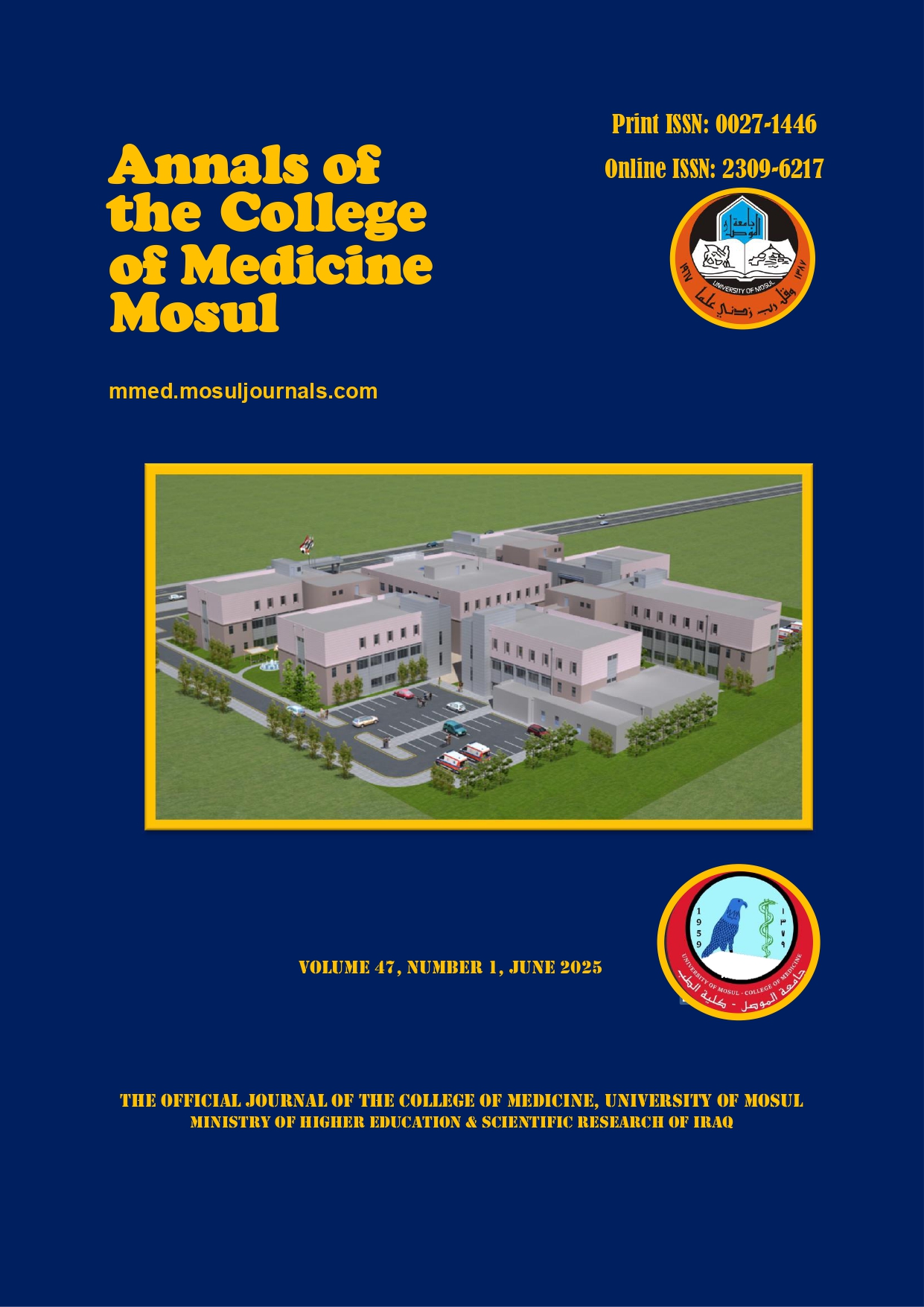Abstract
Background: Toxoplasmosis is a condition resulting from the protozoan parasite Toxoplasma Gondii, which can impact the health of humans and animals in various ways.
Aim: This study aimed to assess the seroprevalence of T. Gondii in females and to identify the risk factors associated with urban and rural areas within Duhok Province, Kurdistan region of Iraq.
Methods: In this study, 211 females of different ages attended medical laboratories in urban and rural areas of Duhok province from December 2023 to February 2024. Blood samples were used to detect specific anti-Toxoplasma gondii IgG and IgM antibodies using serological tests.
Results: In the current study, the total Seropositive toxoplasma antibodies IgG and IgM rate was 31.75% in urban and rural areas, with seropositivity of 3.79% in IgM and 27.96% in IgG. Urban seropositive of anti-Toxoplasma IgM and IgG was recorded in 1.58% and 23.01%, with rural seropositive of anti-Toxoplasma IgM and IgG in 7.05% and 35.29% respectively. Regarding the age groups, high seropositivity of IgM and IgG in urban areas was recorded in the age group of ≤ 20 years, whereas in rural areas, the high IgM and IgG seropositive were shown respectively in the age groups of 21-30 and 31-40 years.
Conclusion: Based on the study's findings, we can conclude that factors like stray cats, increased contact with contaminated soil, farming, caring for cattle or hens, dietary and culinary practices, and personal cleanliness are all responsible for the higher frequency of infection in rural areas.
Aim: This study aimed to assess the seroprevalence of T. Gondii in females and to identify the risk factors associated with urban and rural areas within Duhok Province, Kurdistan region of Iraq.
Methods: In this study, 211 females of different ages attended medical laboratories in urban and rural areas of Duhok province from December 2023 to February 2024. Blood samples were used to detect specific anti-Toxoplasma gondii IgG and IgM antibodies using serological tests.
Results: In the current study, the total Seropositive toxoplasma antibodies IgG and IgM rate was 31.75% in urban and rural areas, with seropositivity of 3.79% in IgM and 27.96% in IgG. Urban seropositive of anti-Toxoplasma IgM and IgG was recorded in 1.58% and 23.01%, with rural seropositive of anti-Toxoplasma IgM and IgG in 7.05% and 35.29% respectively. Regarding the age groups, high seropositivity of IgM and IgG in urban areas was recorded in the age group of ≤ 20 years, whereas in rural areas, the high IgM and IgG seropositive were shown respectively in the age groups of 21-30 and 31-40 years.
Conclusion: Based on the study's findings, we can conclude that factors like stray cats, increased contact with contaminated soil, farming, caring for cattle or hens, dietary and culinary practices, and personal cleanliness are all responsible for the higher frequency of infection in rural areas.
Keywords
Antibodies
seroprevalence
Toxoplasma gondii
toxoplasmosis
Abstract
الخلفية: داء المقوسات هو مرض ناتج عن الطفيلي الأولي Toxoplasma gondii، ويؤثر على صحة الإنسان والحيوان بطرق متعددة، وقد يُسبب مضاعفات صحية خطيرة في بعض الحالات.
الهدف من الدراسة: تهدف هذه الدراسة إلى تقييم معدل الانتشار المصلي لطفيلي T. gondii لدى الإناث، بالإضافة إلى تحديد عوامل الخطورة المرتبطة بالإصابة في المناطق الحضرية والريفية ضمن محافظة دهوك في إقليم كردستان العراق.
طرق البحث: شملت هذه الدراسة 211 امرأة من أعمار مختلفة راجعن مختبرات طبية في المناطق الحضرية والريفية من محافظة دهوك خلال الفترة من كانون الأول/ديسمبر 2023 إلى شباط/فبراير 2024. تم جمع عينات دم لفحص الأجسام المضادة IgG وIgM الخاصة بطفيلي Toxoplasma gondii باستخدام الفحوصات المصلية.
النتائج: أظهرت النتائج أن معدل الإيجابية المصلية الكلي للأجسام المضادة IgG وIgM ضد Toxoplasma gondii بلغ 31.75% في كلا المنطقتين الحضرية والريفية، حيث بلغت نسبة الإيجابية لـ IgM حوالي 3.79%، بينما كانت نسبة IgG نحو 27.96%. في المناطق الحضرية، سُجِّلت إيجابية الأجسام المضادة IgM وIgG بنسبة 1.58% و23.01% على التوالي، بينما في المناطق الريفية سُجِّلت بنسب أعلى بلغت 7.05% لـ IgM و35.29% لـ IgG. وبالنسبة للفئات العمرية، فقد سُجِّلت أعلى نسب إيجابية لـ IgM وIgG في المناطق الحضرية ضمن الفئة العمرية ≤ 20 سنة، في حين كانت النسب الأعلى في المناطق الريفية لدى الفئتين العمريتين 21-30 سنة و31-40 سنة على التوالي.
الاستنتاجات: تشير نتائج الدراسة إلى أن هناك عوامل مثل وجود القطط الضالة، وزيادة التعرض للتربة الملوثة، وممارسة الزراعة، وتربية الأبقار أو الدواجن، والعادات الغذائية وأساليب الطهي، ومستوى النظافة الشخصية، كلها تلعب دوراً مهماً في زيادة معدل الإصابة بداء المقوسات في المناطق الريفية.
الهدف من الدراسة: تهدف هذه الدراسة إلى تقييم معدل الانتشار المصلي لطفيلي T. gondii لدى الإناث، بالإضافة إلى تحديد عوامل الخطورة المرتبطة بالإصابة في المناطق الحضرية والريفية ضمن محافظة دهوك في إقليم كردستان العراق.
طرق البحث: شملت هذه الدراسة 211 امرأة من أعمار مختلفة راجعن مختبرات طبية في المناطق الحضرية والريفية من محافظة دهوك خلال الفترة من كانون الأول/ديسمبر 2023 إلى شباط/فبراير 2024. تم جمع عينات دم لفحص الأجسام المضادة IgG وIgM الخاصة بطفيلي Toxoplasma gondii باستخدام الفحوصات المصلية.
النتائج: أظهرت النتائج أن معدل الإيجابية المصلية الكلي للأجسام المضادة IgG وIgM ضد Toxoplasma gondii بلغ 31.75% في كلا المنطقتين الحضرية والريفية، حيث بلغت نسبة الإيجابية لـ IgM حوالي 3.79%، بينما كانت نسبة IgG نحو 27.96%. في المناطق الحضرية، سُجِّلت إيجابية الأجسام المضادة IgM وIgG بنسبة 1.58% و23.01% على التوالي، بينما في المناطق الريفية سُجِّلت بنسب أعلى بلغت 7.05% لـ IgM و35.29% لـ IgG. وبالنسبة للفئات العمرية، فقد سُجِّلت أعلى نسب إيجابية لـ IgM وIgG في المناطق الحضرية ضمن الفئة العمرية ≤ 20 سنة، في حين كانت النسب الأعلى في المناطق الريفية لدى الفئتين العمريتين 21-30 سنة و31-40 سنة على التوالي.
الاستنتاجات: تشير نتائج الدراسة إلى أن هناك عوامل مثل وجود القطط الضالة، وزيادة التعرض للتربة الملوثة، وممارسة الزراعة، وتربية الأبقار أو الدواجن، والعادات الغذائية وأساليب الطهي، ومستوى النظافة الشخصية، كلها تلعب دوراً مهماً في زيادة معدل الإصابة بداء المقوسات في المناطق الريفية.
Keywords
المقوسة الغوندية، الانتشار المصلي، داء المقوسات، الأجسام المضادة
